 The Banned Books Club by Brenda Novak
The Banned Books Club by Brenda Novak Format: eARC
Source: supplied by publisher via Edelweiss
Formats available: hardcover, large print, paperback, ebook, audiobook
Genres: books and reading, relationship fiction, women's fiction
Pages: 352
Published by Mira on September 17, 2024
Purchasing Info: Author's Website, Publisher's Website, Amazon, Barnes & Noble, Kobo, Bookshop.org, Better World Books
Goodreads
She left her hometown following a scandal—but family loyalty is dragging her back…
Despite their strained relationship, when Gia Rossi’s sister, Margot, begs her to come home to Wakefield, Iowa, to help with their ailing mother, Gia knows she has no choice. After her rebellious and at-times-tumultuous teen years, Gia left town with little reason to look back. But she knows Margot’s borne the brunt of their mother’s care and now it’s Gia’s turn to help, even if it means opening old wounds.
As expected, Gia’s homecoming is far from welcome. There’s the Banned Books Club she started after the PTA overzealously slashed the high school reading list, which is right where she left it. But there is also Mr. Hart, her former favorite teacher. The one who was fired after Gia publicly and painfully accused him of sexual misconduct. The one who prompted Gia to leave behind a very conflicted town the minute she turned eighteen. The one person she hoped never to see again.
When Margot leaves town without explanation, Gia sees the cracks in her sister’s “perfect” life for the first time and plans to offer support. But as the town, including members of the book club, takes sides between Gia and Mr. Hart, everything gets harder. Fortunately, she learns that there are people she can depend on. And by standing up for the truth, she finds love and a future in the town she thought had rejected her.
My Review:
 I picked this book for today because Sunday is the official start of Banned Books Week, but the blog tour ends Saturday so this was as close as I could get. So here we are. Or rather, there Gia Rossi is, back home in Wakefield, Iowa. Pretty much the last place on Earth she wants to be.
I picked this book for today because Sunday is the official start of Banned Books Week, but the blog tour ends Saturday so this was as close as I could get. So here we are. Or rather, there Gia Rossi is, back home in Wakefield, Iowa. Pretty much the last place on Earth she wants to be.
There isn’t exactly an actual Banned Books Club in this book, but once upon a time, back when Gia and her sister Margot were in high school, there was. Before all the shit hit all the fans in town, and Gia left and tried her damndest not to look back.
However, it could be said, and it would be absolutely true, that everything that happens in this book, even though it takes place nearly 20 years later, is a ripple effect of that long ago club.
Gia started the club because she was seemingly a natural-born iconoclast, a person who never met a windmill she didn’t want to tilt at, someone who, when told by her parents and everyone around her explicitly NOT to make waves, would make the biggest waves she could manage to churn up.
Her high school banned The Catcher in the Rye, The Outsiders and The Handmaid’s Tale from the Honors English reading list. Not that this happened officially, exactly. The PTA browbeat the teacher, who was the head of the English department, into dropping the books. That teacher, Mr. Hart, didn’t stand up for either the books or the students.
If Gia had been a bit older – or a bit more cynical – she would have seen that as a sign. But she wasn’t and she didn’t and thereby hangs half this tale.
But only half because this isn’t just Gia’s story. It’s the story of both Gia and her sister Margot. The rule breaker and the rule follower. The wild child and the golden. The one who left – with the town practically lighting her way with torches and pitchforks – and the one who stayed and did everything she thought she was supposed to do.
Until their mother was diagnosed with cancer and both of their houses of cards came tumbling down.
Escape Rating A-: As I said at the top, this isn’t really a story about that high school banned books club. Very much on the other hand, this is a book that in certain ways fits right in with the kind of books that have been banned.
 It tells not just one but two stories that make people uncomfortable – which is what really lies behind all of the book bannings. (Purported reasons for that discomfort certainly vary – but the fact of the discomfort remains the same) The three books that were removed from Gia’s high school reading list have all been repeated targets of challenges and bans for the past 30 years if not longer.
It tells not just one but two stories that make people uncomfortable – which is what really lies behind all of the book bannings. (Purported reasons for that discomfort certainly vary – but the fact of the discomfort remains the same) The three books that were removed from Gia’s high school reading list have all been repeated targets of challenges and bans for the past 30 years if not longer.
The Banned Books Club combines two stories that make people uncomfortable, stories that some people would prefer not to read about. Gia’s story is about her sexual molestation at the hands of a teacher – and the way that the town divided among itself in the aftermath and literally makes it psychologically damaging for her to remain.
Margot’s story is about domestic abuse. Her angry, controlling husband hasn’t hit her – yet – but the emotional and psychological abuse he dishes out with every breath is even more damaging. But he’s good buddies with the local cops – to the point where they turn a blind eye to his harassment. Even though by this point his wife has fled so he’s not harassing her – his harassment to the point of vandalism is directed at his wife’s family – including her cancer-stricken mother – after Margot flees.
(While some readers may be thinking that the themes of this book are considered fairly tame stuff today and are common plots in women’s fiction, it’s fair to say that some will view Gia’s story as “woke” because the (very young) woman was believed instead of the male authority figure. Margot’s story could also be condemned because it challenges the integrity of the “thin blue line”, and because there’s suddenly a whole lot of nostalgia for the 1950s when divorces were considerably fewer because women had no other options – going all the way to the point where the idea that women should remain even in violent marriages is getting a lot of airplay these days.)
Neither of their stories make for light reading, but they are both important as they are stories about standing up for oneself in spite of the still, small voice in the back of many of our heads telling us not to rock the boat, that things could always be worse.
So, as a book, I found both Gia’s and Margot’s not exactly fun to read but compelling in the way that each of them worked out a way forwards – no matter how desperate in Margot’s case. However, she planned expertly in spite of her many, justified fears and executed that plan brilliantly – and I always give points for competence especially in desperate situations.
In the end, I did feel like there was a lot of unpleasant crap in the family dynamics between Gia and Margot and between the sisters and their parents that contributed to pretty much everything – especially the way that Gia left town and stayed virtually gone for nearly two decades. Those issues didn’t so much get resolved as swept under the rug in the wake of their mother’s death. Which is exactly what families do, but it left this reader feeling like there was a bit of a loose end that I’d like to have seen resolved – or at least acknowledged – before the end.
But I did like that Gia decides to move back to Wakefield and open a bookstore – a store she plans to name, of course and fittingly for a happy ending that brings the story around full circle, the Banned Books Shoppe. A place where banned books will be loved and recommended, bought and sold, available and read, but never, ever banned!


 More Days at the Morisaki Bookshop (Days at the Morisaki Bookshop, #2) by
More Days at the Morisaki Bookshop (Days at the Morisaki Bookshop, #2) by  Escape Rating A-: I picked up More Days at the Morisaki Bookshop because, having fallen in love with the first book,
Escape Rating A-: I picked up More Days at the Morisaki Bookshop because, having fallen in love with the first book,  So maybe don’t listen to that part while you’re driving because the urge to cry right along with Takako is pretty much irresistible.
So maybe don’t listen to that part while you’re driving because the urge to cry right along with Takako is pretty much irresistible.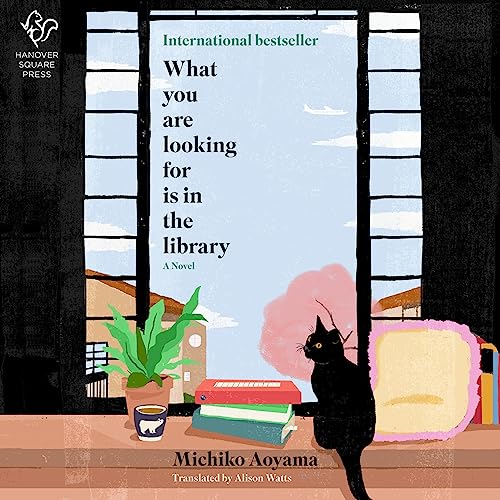 What You Are Looking For Is in the Library by
What You Are Looking For Is in the Library by 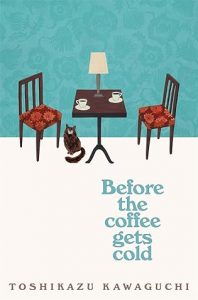 As much as I enjoyed the narration, which I very much did, it’s the stories themselves that give the collection its charm, as was true in similar books such as
As much as I enjoyed the narration, which I very much did, it’s the stories themselves that give the collection its charm, as was true in similar books such as 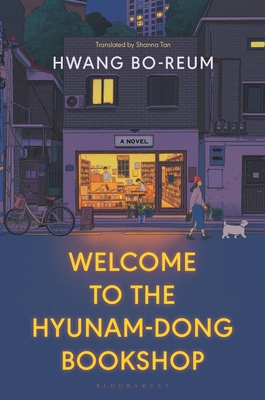 Welcome to the Hyunam-Dong Bookshop by
Welcome to the Hyunam-Dong Bookshop by 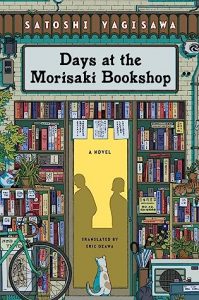 Which is similar in a lot of ways to the opening of the utterly charming and absolutely marvelous
Which is similar in a lot of ways to the opening of the utterly charming and absolutely marvelous 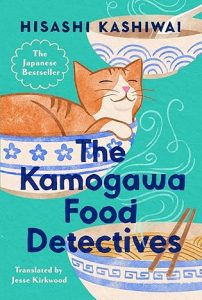 Escape Rating C: I fell in love with both last week’s
Escape Rating C: I fell in love with both last week’s 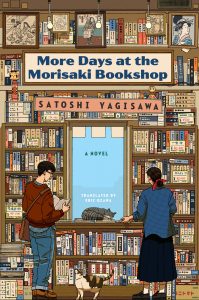 As she comes back to herself, and the bookshop reaches out to its community and the wider world as a result, we do start getting glimpses into what brings the other characters in the story to become part of the shop and the stories within, but Yeongju uses the increasing busy-ness of the shop and the life she has focused around it as a way of not looking back at what brought her there in the first place.
As she comes back to herself, and the bookshop reaches out to its community and the wider world as a result, we do start getting glimpses into what brings the other characters in the story to become part of the shop and the stories within, but Yeongju uses the increasing busy-ness of the shop and the life she has focused around it as a way of not looking back at what brought her there in the first place.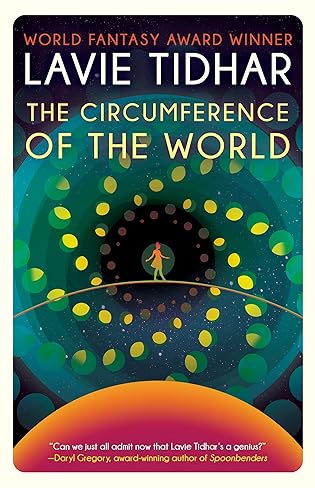 The Circumference of the World by
The Circumference of the World by 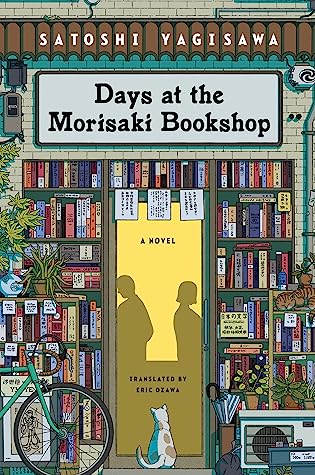 Days at the Morisaki Bookshop by
Days at the Morisaki Bookshop by  Escape Rating A-: This is simply a lovely story. It’s a bit of a combination of
Escape Rating A-: This is simply a lovely story. It’s a bit of a combination of 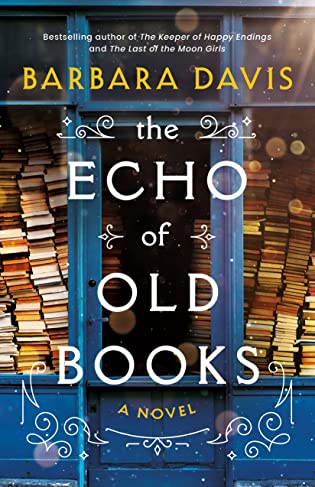 The Echo of Old Books by
The Echo of Old Books by 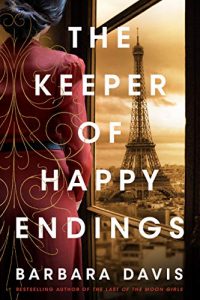 And their own searing, scarring pasts. The more we learn about both couples, the more we hope for HEAs all around – no matter how impossible that might seem. We become invested in both stories every bit as much as Ashlyn does Belle’s.
And their own searing, scarring pasts. The more we learn about both couples, the more we hope for HEAs all around – no matter how impossible that might seem. We become invested in both stories every bit as much as Ashlyn does Belle’s. The Cat Who Saved Books by
The Cat Who Saved Books by 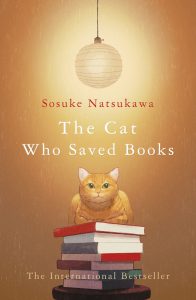 Escape Rating A-: I picked this one up for the cat and the books, in that order. Which reminds me that the cat pictured on the US cover does not do Tiger the Tabby justice. The UK cover (pictured at left) does a much better job of giving Tiger his due.
Escape Rating A-: I picked this one up for the cat and the books, in that order. Which reminds me that the cat pictured on the US cover does not do Tiger the Tabby justice. The UK cover (pictured at left) does a much better job of giving Tiger his due.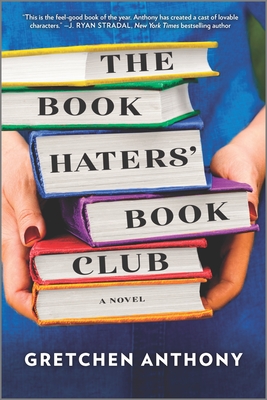 The Book Haters' Book Club by
The Book Haters' Book Club by 
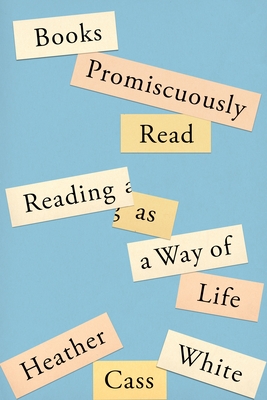 Books Promiscuously Read: Reading as a Way of Life by
Books Promiscuously Read: Reading as a Way of Life by